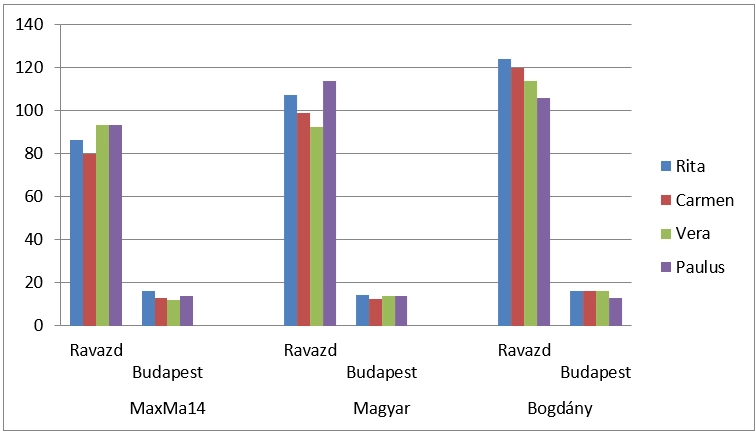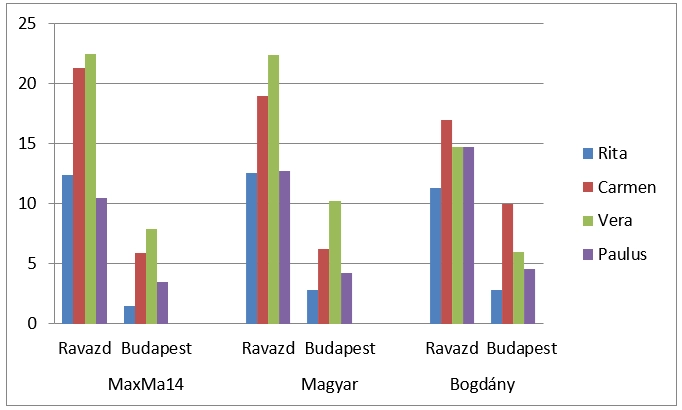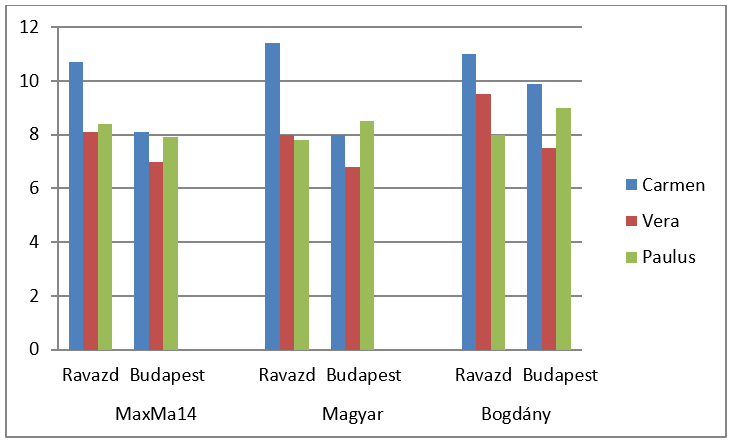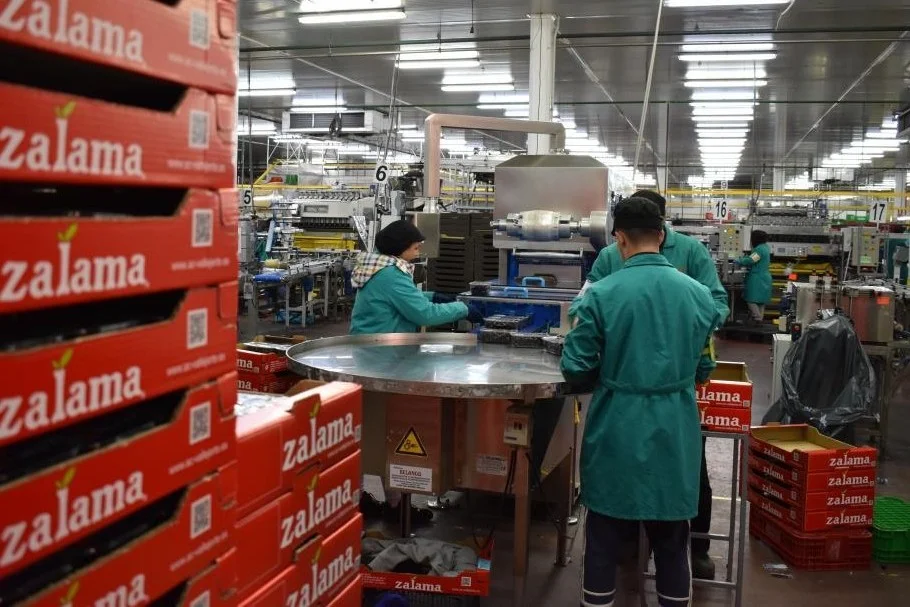Prunus mahaleb L. is the dominant rootstock in cherry orchards across Central and Southern Europe, as well as Northwest China. Mahaleb rootstocks have shown excellent adaptability to dry continental climate conditions, including prolonged dry and hot periods, high lime content soils, extremely high pH levels, and poor soil structures.
Additionally, Mahaleb rootstocks are highly compatible with many sweet and sour cherry cultivars. Three clonal Mahaleb rootstocks were developed at the Hungarian University of Agriculture and Life Sciences and its predecessors as part of a local breeding program.
‘Bogdány’, ‘Egervár’, and ‘Magyar’ were registered and patented by Hungarian authorities in 2014. All Hungarian-bred Mahaleb rootstocks can be propagated vegetatively—through softwood and hardwood cuttings or micropropagation.
These rootstocks facilitate the creation of spindle-shaped tree canopies by training the scion shoots in a flat position. Another advantage of these rootstocks is the absence of suckering behavior.
Materials and Methods
This study presents results for ‘Rita’, ‘Carmen’, ‘Paulus’, and ‘Vera’ grafted onto ‘Magyar’ and ‘Bogdány’, with ‘MaxMa 14’ used as a control. Two trials were conducted in Hungary. The first took place in Central Hungary (20 km southwest of Budapest) on chernozem soil with high lime content: pH 8, total lime content in the top 60 cm = 5%, and humus = 2.3%.
The second trial was located in Ravazd (near Győr, Northwest Hungary), on high-quality loess-based soil, slightly argillic brown earth, with nearly neutral pH, total lime content = 4.3%, and humus content = 2.41%.
These results refer to the 8th year of the orchards under irrigated (Ravazd) and rainfed (Budapest) conditions. Table 1 shows the climate data. It is important to note that 2022 was an extremely dry year.
1. Meteorological data during the 2022 data collection
| Parameters | Value | Ravazd | Budapest |
|---|
| Average annual temperature (°C) |
| 11.8 | 11.4 |
| Average temperature during growing season (Apr–Sep) (°C) |
| 18.4 | 17.5 |
| Precipitation in H1 2022 (mm) |
| 253 | 161 |
| Supplementary irrigation in H1 2022 (mm) |
| 90 | 0 |
| Annual average sunlight hours |
| 2161 | 2045 |
Table 1. Variation in trunk cross-sectional area of the rootstock/scion combinations (cm2)
In the evaluation year, data were collected on trunk diameter (for cross-sectional area), tree yield, and fruit weight.
Results
Under irrigation, tree vigor varied by rootstock. For ‘Magyar’, the most vigorous cultivar was ‘Paulus’, followed by ‘Rita’, ‘Carmen’, and ‘Vera’.
On ‘Bogdány’, the order was: ‘Rita’ > ‘Carmen’ > ‘Vera’ > ‘Paulus’. On ‘MaxMa 14’ (control), ‘Vera’ and ‘Paulus’ showed the most vigor, while ‘Rita’ and ‘Carmen’ had less.
In the rainfed orchard, ‘Rita’, ‘Carmen’, and ‘Paulus’ displayed high vigor; ‘Paulus’ slightly less than the others. ‘Magyar’ improved cultivar growth by 12% to 43% under irrigation compared to control.
In rainfed conditions, this rootstock decreased vigor by 3% to 12%, except for ‘Vera’/‘Magyar’, which had 12% more vigor than the control.
‘Bogdány’ provided greater vigor under both conditions: +1% to 33% (rainfed), +1% to 49% (irrigated) vs. control (Figure 1).

Figure 1. Variation in trunk cross-sectional area (cm²) for rootstock/scion combinations
Yield performance
Rootstock impact on yield varied with rootstock/scion compatibility and water availability in the 8th year. Only ‘Paulus’/‘Magyar’ had 23% more yield than the control (irrigated).
Other scions on ‘Magyar’ had equal or reduced yields (‘Rita’ – 0%, ‘Carmen’ –11%, ‘Vera’ – 35%). In rainfed conditions, ‘Rita’/‘Magyar’ saw a 75% yield increase; ‘Carmen’ +8%, ‘Vera’ +30%, ‘Paulus’ +23%.
Most scions on ‘Bogdány’ outperformed control. ‘Vera’ had +1% yield (irrigated), ‘Paulus’ +40%. ‘Rita’ (−9%) and ‘Carmen’ (−21%) yielded less. In rainfed trials, ‘Rita’ +75%, ‘Carmen’ +58%, ‘Paulus’ +32%, while ‘Vera’ was −25% (Figure 2).

Figure 2. Yield variation (kg/tree) of rootstock/scion combinations
Yield per hectare and fruit weight
In the 8th year, yield per hectare (t/ha) was much lower under non-irrigated conditions. ‘Rita’, ‘Carmen’, and ‘Paulus’ on both rootstocks outperformed the control in non-irrigated trials (‘Bogdány’: +83%, +71%, +21%; ‘Magyar’: +83%, +10%, +35%).
‘Vera’ yielded +31% on ‘Bogdány’, but −23% on ‘Magyar’. In irrigated trials, ‘Carmen’ and ‘Vera’ underperformed on ‘Bogdány’ (−20%, −35%) and ‘Magyar’ (−8.5%, −1%).
‘Paulus’ and ‘Rita’ performed better on ‘Bogdány’ (+40%, +1%) but worse on ‘Magyar’ (−1%, −9%) vs. ‘MaxMa 14’ (Table 2).
| MaxMa 14 | Magyar | Bogdány |
|---|
| Location | Ravazd / Budapest | Ravazd / Budapest | Ravazd / Budapest |
| Rita | 15.5 / 1.8 | 15.7 / 3.5 | 14.2 / 3.5 |
| Carmen | 26.7 / 7.3 | 23.8 / 7.8 | 21.2 / 12.5 |
| Vera | 28.2 / 9.8 | 28.0 / 12.8 | 18.4 / 7.5 |
| Paulus | 13.1 / 4.4 | 15.9 / 5.2 | 18.4 / 5.8 |
Table 2. Calculated yield of the examined rootstock/scion combinations
‘Rita’ had very low fruit weight across all rootstocks, failing to meet market minimums. ‘Bogdány’ showed positive effects on fruit weight in both conditions vs. the control.
With ‘Magyar’, fruit weight was mostly lower than control, except for ‘Carmen’ (+6%, irrigated) and ‘Paulus’ (+14%, rainfed).

Figure 3. Fruit weight (g/fruit) for rootstock/scion combinations
Conclusions
In conclusion, irrigation is essential to maintain commercial sweet cherry orchards. The benefits of dwarfing rootstocks depend on specific rootstock/scion interactions.
There is no universally ideal rootstock for cherries—each cultivar responds differently.
Based on results, ‘Bogdány’ is suitable for ‘Paulus’ and ‘Rita’, while ‘Magyar’ performs better with ‘Carmen’ and ‘Vera’ among the studied cultivars.
Géza Bujdosó, Károly Hrotkó
Hungarian University of Agriculture and Life Sciences, Institute for Horticultural Science, Research Centre for Fruit Growing, 1223 Budapest, Park u. 2, Hungary
Report presented at VIP - Varieties International Project, Rimini Expo Centre, Macfrut 2025
Italian Berry – All rights reserved













